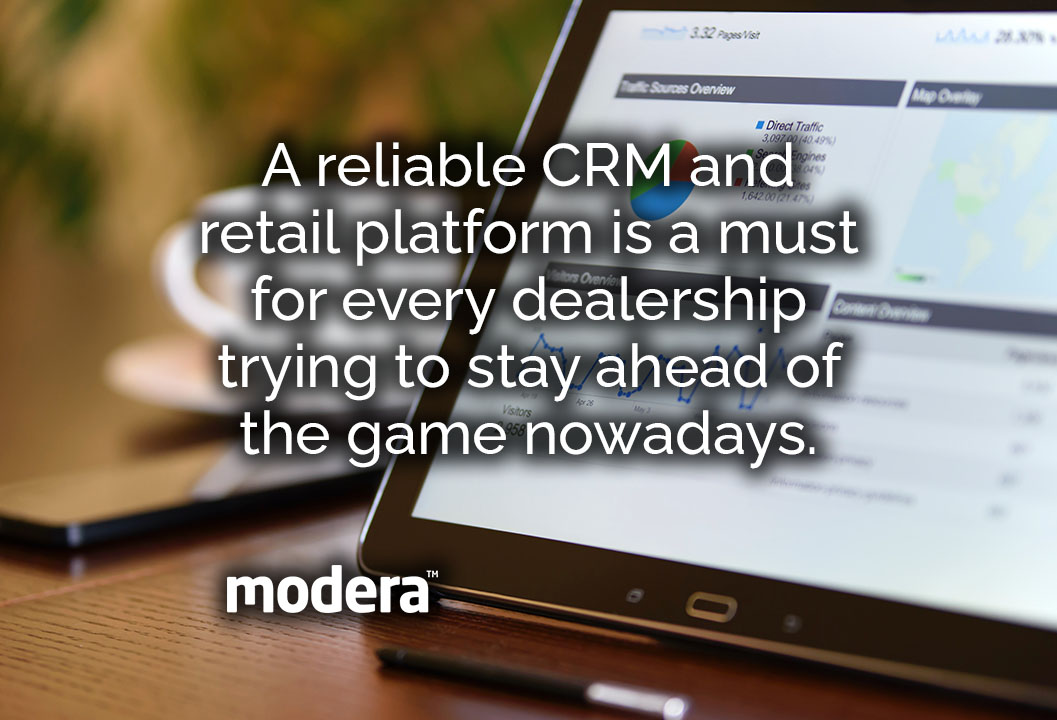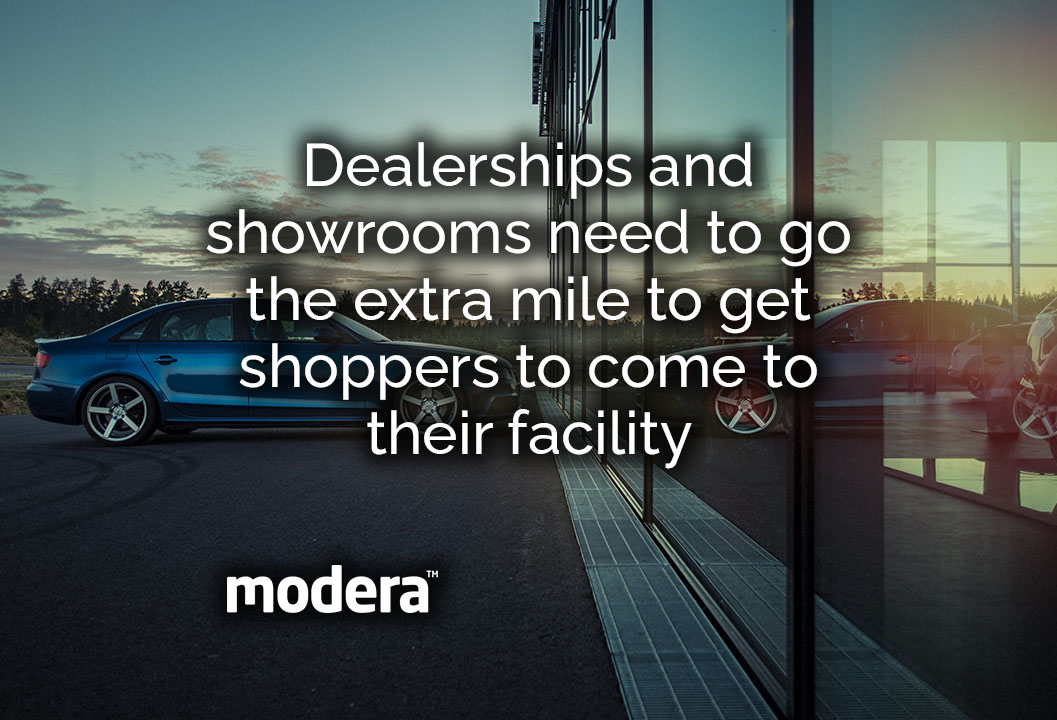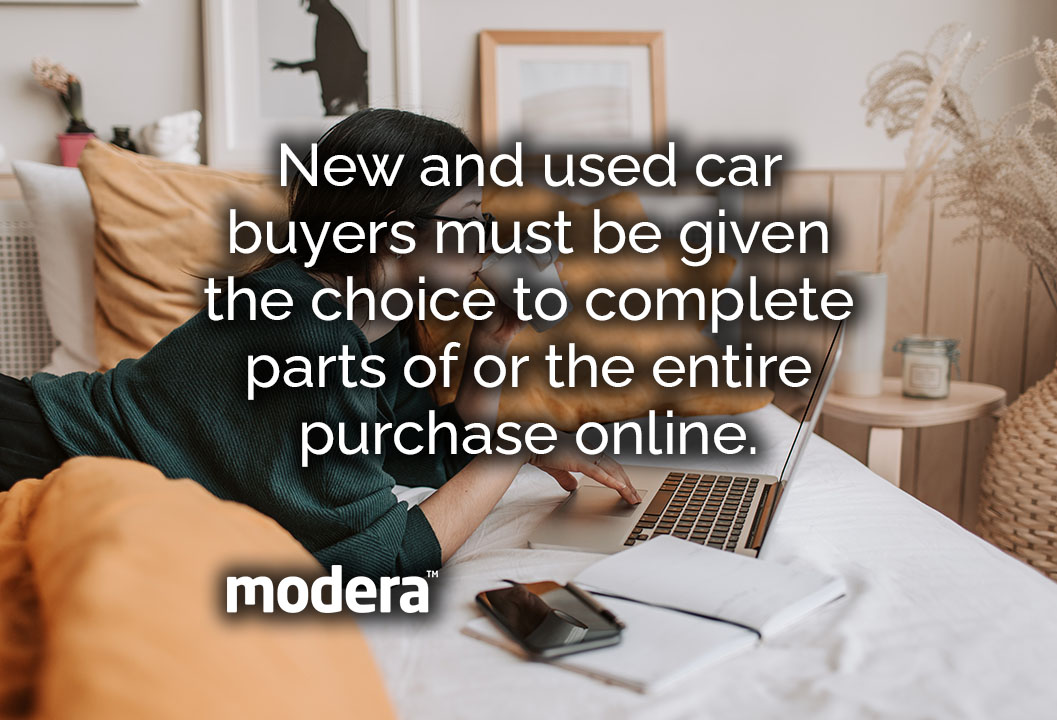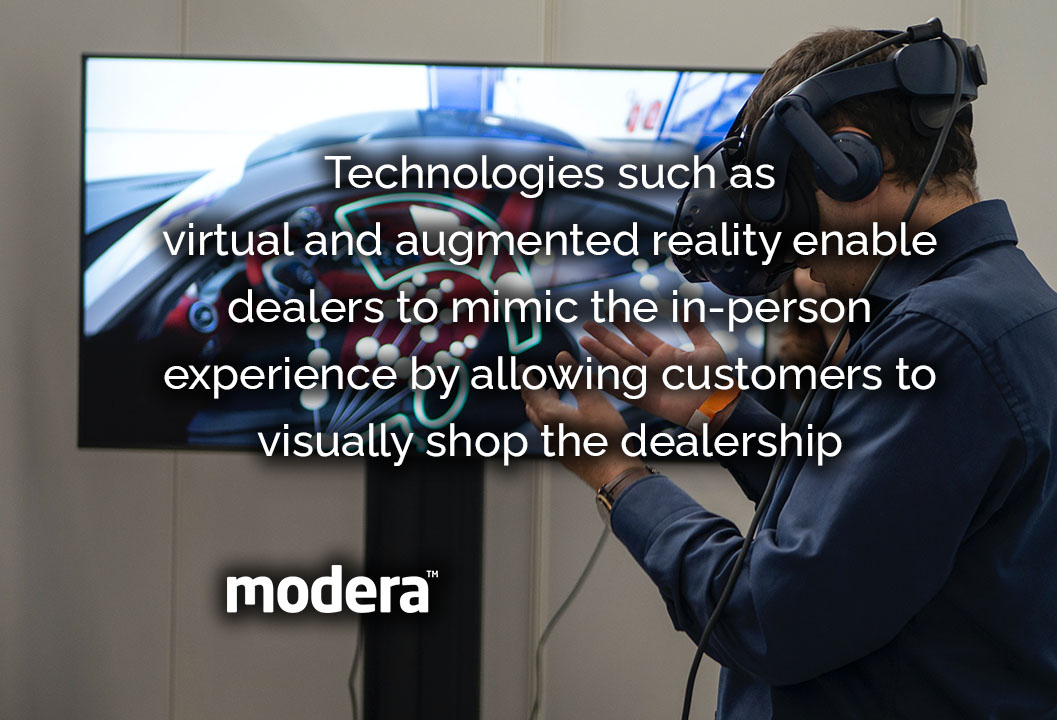The Covid-19 pandemic has caused the automotive industry to completely change the way they sell cars. However, it has evoked a sense of urgency for better collaboration and improved customer experience at the same time. Dealerships and showrooms have had to shutter operations, which has limited their ability to engage actively with potential buyers. Thus, the pandemic has forced them to come up with new techniques of driving sales.

How did the pandemic affect the automotive industry?
When Covid-19 lockdowns and stay-at-home orders were instituted across the nation (as well as globally), retailers switched to selling remotely through web platforms, video and phone calls, and even email. Offering home delivery or click-and-collect has become part of “business-as-usual” for many.
But not every dealership and showroom could make this transition to operating a digital facility that easily. They lacked the technology, personnel and infrastructure to make this happen. However, “grace period” to get it right when it comes to customer expectations has mostly run out. The economy is opening up slowly, and it is time for the automotive industry to implement some of the biggest lessons this pandemic has taught them.
Here are some of the ideas:
1. All-virtual selling for those comfortable with digital retail
In the early days of the crisis, in-person sales came to a grinding halt, so dealers and showrooms were forced to embrace new sales tactics and processes to serve their market. However, many see these measures as temporary or don’t go as far as they could to deliver a great customer experience for buyers these days.
But customers have never been more open to buying a car through an online dealership than they are right now. Some are willing to make online shopping their primary mode of purchase permanently. However, digital retailing for the automotive industry has to be streamlined and perfected in order to provide a satisfactory experience.
Those who adapt to new consumer buying behaviors now by committing themselves to the same level of excellence in virtual sales as they do with in-person sales, are best positioned to survive the ongoing pandemic, and also thrive in the long run.
2. Communicate more effectively
Since the pandemic has limited the number of in-person “ups”, it means consumer communication and marketing need to work even harder for each sale. Dealerships and showrooms are doing a fantastic job of showing how they are adhering to Covid-19 protocols to keep customers safe, but they have to take their communication and marketing efforts further.
It is necessary to begin by auditing your retail outlet’s external messaging, especially in your virtual dealership environment. Make sure that every aspect, starting from the website to the on-hold recording to social media platforms, is fully updated. Information should include new hours, safety precautions being followed, digital retailing options, and more. Ensure your team is promptly following up on digital leads and mentioning remote and virtual sales options. As always, if leads aren’t followed up, sales will tank.
People buy from retailers they are fond of and trust. Make use of video messaging technology as a substitute for face-to-face interactions. Utilize the marketing tools at your disposal to create transparent and personalized offers with no gimmicks – be honest and straight with what you are offering.

3. Time to unite your dealership
While things have changed drastically there is one aspect that has remained the same – customer experience being critical in every sales and service touchpoint. Even though this sounds ridiculously simple, it is in this area that many retailers fail to deliver on what their brand promises.
Most dealerships and showrooms haven’t put in sufficient efforts to create a seamless sales experience, regardless of which part in the process, the customer transitions from online to in-person. For instance, if a customer gets in touch with a member of your team via phone and starts the process of buying a car virtually, you wouldn’t want to make them start from scratch when they visit the facility.
Yes, some retailers have resolved this issue by having dedicated salespersons online, to ensure these buying experiences are connected. But if there are staffing constraints, this approach gets restricted. Thankfully, there are data-marketing tools these days that allow retailers to provide buyers with the customer experience they are looking for, even with reduced staff.
Leverage your contact management system, dealership management system, data mining solutions, and sales platforms to create automated personalized marketing campaigns. The entire sales team should be able to access the same data-driven talking points to enhance customer engagement and ensure the buying experience is hassle-free.
A reliable CRM and retail platform is a must for every dealership trying to stay ahead of the game nowadays. To guarantee the seamless customer transition from online to offline, and make sure no leads get lost in the process, opt for a digital CRM solution such as the one by Modera Software.

4. Be flexible
When COVID-19 first hit and government shutdown orders went into effect, it took time for most dealerships and showrooms to update their marketing messaging across all channels. For some facilities, they still used the “come on in for a test drive” as their main message in websites and ads. Needless to say, it was totally irrelevant for their shoppers at the time.
Retailers that had the infrastructure to be flexible and dynamic in their marketing strategy during the pandemic were able to turn around their messaging quickly. However, this transition didn’t mean they were successful in seeing results, even during a crisis, because they failed to rigidly define aspects like messaging and budget. Those that pre-allocated budgets to Facebook and Google were much less resilient during the pandemic because it took them much longer to realize the shift in consumer behavior from search to social while being locked at home.
Retailers that had automated marketing budgets – fluid budgets that self-allocate based on where the best opportunities are in real-time – were seeing better results as the learning curve was quicker and more efficient.
It is necessary to understand the market is unpredictable and can change at any time. But one thing is certain – dealerships and showrooms need to know who their shoppers are and not miss out on an opportunity. Even during such tough times, buyers are still looking for their next car, and most likely at a higher gross, so make sure your marketing strategy is flexible to change in real-time and react fast. Whenever inventory comes in, your marketing strategy should be attuned to your business goals.
5. Re-evaluate marketing strategies
Whenever there is a crisis, it is a common instinct to put a pause on marketing spend. However, there are long-term risks to this, as Covid-19 has taught many retailers the hard way. Firstly, it is imperative to keep brand awareness high. Even during tumultuous times, people have to service cars and renew leases, especially those who have to step out and drive to work. Ensuring they choose your facility over a competitor is crucial. Retailers should be focused on gaining and retaining customers for life; cutting all marketing spend will restrict your facility from doing this successfully.
But then again, when times are tough, it gives you an opportunity to assess Return on Investment (ROI) and productivity. So while pausing on marketing spend does put your store at a disadvantage, it is the apt time to do a deep dive into your data and ensure your marketing ROI is high. This means you can still be the dealership of choice for shoppers during any crisis
6. Bring shoppers to your dealership anyhow
Retailers scrambled to implement a successful digital retail solution in order to stay relevant to customers during the Covid-19 pandemic. Even if most customers weren’t transacting online, software and other tools gave them the chance to reduce their time in the facility and start the purchase process online. This was a way for dealers to attract customers and stay relevant during the pandemic.
But now, dealerships and showrooms need to go the extra mile to get shoppers to come to their facility. Even if they face problems like inventory shortage, they should consider advertising inventory that is on backorder and not in stock. It helps your dealership gain customers for life before they go to competitors. Focusing on trade-in acquisition campaigns or investing in a strategy to move more stuck or aged vehicles can also help your dealership market to customers while aligning with business goals to get more inventory, and sell lot rot at the highest potential gross.

How can showrooms and dealers bounce back?
Even if the economy is slowly reopening, the pandemic is likely to influence customer behavior for the near future, so dealerships and showrooms have to depend on digital channels and more to build and maintain relationships with buyers. Here is what they can do:
1. Adopting an omni-channel approach is a must
The new competitive advantage is “customer choice”. If dealers and showrooms try to influence customers down one channel, there is a risk of alienating some of them. There are numerous friction points in the customer journey to car process, which can take anywhere between 6 to 13 weeks. Even so, there is no guarantee, as the prospective buyer is always a click away from heading over to your competition.
It is necessary for automotive retailers to consider physical and digital showrooms as “one single sales floor”. Even if a customer is frustrated, they will always buy from a retailer that gets it right, and are prepared to pay a little extra for the experience. With a majority of buyers falling into the hybrid category of not being exclusively online or in-showroom, there can’t be an artificial separation of the two.
Providing a superior experience throughout the purchase process is a must. Buyers must be given the choice to complete parts of or the entire purchase online. Dealerweb’s study shows that almost 50% buyers are likely to complete a vehicle purchase if they receive a response to an online enquiry within an hour. A quarter of buyers say they expect a dealer to respond in less than 30 minutes. The more personalized the buying experience is, the better are chances that customers will go ahead and buy the vehicle. Retailers are expected to know what customers want and provide proactive services.

Shopping for a new car is still a retail event for the family and dealers can attract customers by ensuring everyone who walks onto the forecourt feels valued. A hybrid model will pave the way forward! Online-only market entrants that provide a limited choice of stock won’t be able to last long. Showrooms and dealerships that offer a greater choice of stock, digital retailing, extensive finance options, nationwide delivery and experienced after sales service, will definitely survive.
2. AI and machine learning is the norm
Thanks to data science and machine learning, buyers are bound to experience subtle movements that will help them choose and purchase even faster, in the years to come. It streamlines processes for dealerships and showrooms, while reducing cost of sale. Starting from predictive marketing based on demographic lifestyle data and typical buying habits, to around-the-clock artificial intelligence (AI) capable of answering queries immediately and supporting a customer with an online purchase, motor retailers will be poised to sell vehicles based on efficient business models.
Data regarding customer behavior has to be properly collated, and this information when scientifically interrogated will answer which audiences buy a particular model, trim, and engine, and more importantly, why they do so. Expert knowledge has to be combined with data-led customer service solutions.
The opportunity presented by Electric Vehicles (EVs) linked with connected car technology are, quite literally, wired to continuously generate data on vehicle health, from tire pressure and engine temperature to air con faults and battery health. They also compile information on drivers like media preferences, favorite locations, driving patterns, energy usage, and more.
Platforms underpinned by AI technology are already being used to collate this data and create a 360-degree view of the customer. When driver profiles are updated round the clock with the latest information, dealerships, showrooms, manufacturers and aftercare providers can access the same information at every stage of the customer journey. Be it vehicle manufacturers, leasing businesses, insurance providers, breakdown organizations or external partners that support across the customer journey, the end goal is the same – providing better services to customers and adapting models to meet their requirements.
3. A dealer advisor reopening team is a must
Customers are looking for specific changes in dealer operations to ensure their safety. Be it increased cleaning, mask and glove requirement for employees, maintaining physical distancing, customer mask requirements, and in-dealer customer limit – safety is the top priority now. If buyers don’t get guarantees that dealerships and showrooms are following Covid-19 protocols, they might hesitate to re-enter those facilities. Reopening instructions and planning should come from a centralized team that works directly with dealers and other personnel who require guidance during the reopening process.
A three-tier approach should be followed – take a look:
- Limited reopening is a must. Customers should be allowed to return to dealerships by appointment only with strict interaction and cleanliness guidelines to limit the number of customers at any given time. It also gives a chance to staff to provide one-on-one service.
- Customers should be served digitally and remotely. Dealers should be enabled to service customers in sales, service and fulfillment with contactless or minimal contact options.
- Dealerships and showrooms will open in a phased manner and begin to return to some semblance of normal operations.
4. Improving overall car buying experience
It is all about appeasing the customer. Dealerships and showrooms should come up with novel ways to engage customers that enhance customer journey. Browsing and shopping stage of the journey has to be contactless, digital interactions between customers and retail staff. Many customers have stated they want to reduce visits to facilities and use online channels for information search and purchase.
Technologies such as virtual and augmented reality enable dealers to mimic the in-person experience by allowing customers to visually shop the dealership, zoom in on inventory, ask questions and access detailed specs about vehicles of interest. They can go on virtual test drives to get a feel of what it is like to drive a particular car. Volkswagen and Jaguar Land Rover have offered virtual showrooms to customers so they can make smart, informed decisions and get necessary data regarding vehicles from the comfort of their home (with or without interacting with a salesperson).

But it isn’t as easy as it sounds, because in the automotive industry, the online experience is disjointed and just used to book a car. It is followed by a tedious process where buyers need to visit the facility, sign paperwork, and then pick up the car. Brands like Tesla, Carvana, Vroom and RumbleOn are the only ones who have skirted past dealer network hurdles. OEMs have to speed up direct-consumer capabilities, but helping retailers streamline purchasing experience is also a start.
Customers should be allowed to submit financing applications through their website, and field payments over the phone for transactions that take place via the automated clearing house (ACH). With the aid of e-signatures, customers can complete applications and transactions from home, so they don’t have to step foot in the dealership.
It is uncertain what the future holds for the automotive retail industry, but adapting to the new normal is a must. Customers must get what they want – be it safe in-person shopping or a seamless digital retail experience, or else they won’t hesitate to go to your competitor.
The easiest way to guarantee your business is keeping up with the current trends and keeping the sales numbers growing, is to opt for a simple and reliable software such as Modera. The solutions by Modera are created specifically for the automotive industry, to help your business in the ever-changing world of digitization.
Find out more about the solutions that Modera offers for automotive businesses HERE.

